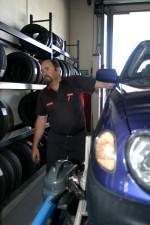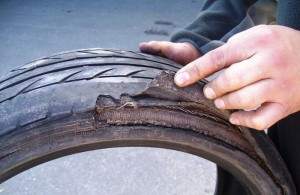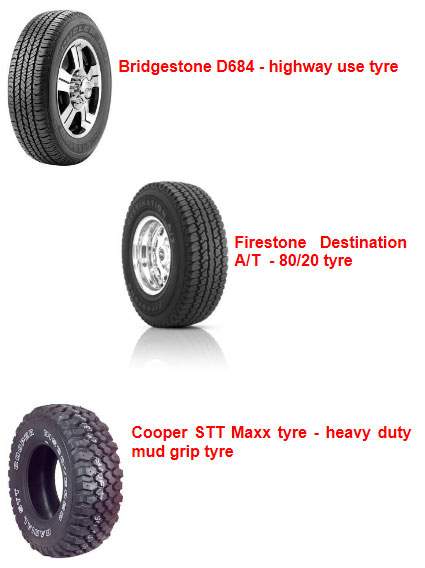Firstly a tyre that is separating means a tyre that is starting to come apart. A tyre that is starting to separate will show up as a wheel balance type problem, where the car's steering wheel will shake in your hand while driving, or you will feel a vibration through the vehicle as you drive.
The easiest way to tell whether you have a wheel balance problem, or a separating tyre is the speed at which it occurs.
Wheel balance will not usually show up when you are driving at city speeds e.g 50kph etc. A tyre that is starting to separate will - it makes the car appear to wobble at slow speed from the front or the rear of the vehicle, and will appear to improve as the speed increases and become a vibration. The reason for this change is as the tyre rotates faster on the car the wobble gets faster and doesn't seem quite so bad.
When I suspect a separating tyre on a customers car the first thing I will ask is, "will you notice the problem if you drive up the street to the roundabout?" If the answer is yes then we most likely have a tyre that is in the process of failing.
Tyres can separate for a number of reasons
As your tyres wear down there is less tread to protect the body plies of the tyre, a stone or nail or other sharp object pierces the tyre, not necessarily right through but into the body ply of the tyre. Moisture can now get in to the cut and as the tyre heats up the moisture in the tyre expands causing the internal structure of the tyre to start coming adrift. A nail or foreign object left in a tyre can also cause the same problem by providing an entry for moisture etc.
As you may be aware these types of failures seem to happen to used imported or cheap tyres a lot more often than better quality tyres. The reason for this is that the better tyres are constructed with extra cap plies and more under tread rubber in the tyre to protect the tyre against the harsh stone chip that we use on our NZ roads. A large percentage of cheap, imported tyres that come into NZ are not constructed with this in mind and thus a lot more prone to this type of failure.
If you think you have a tyre that is failing in this way, change it as soon as possible as the tyre will eventually come apart and you will have steel wire and bits of tyre peppering your car and any one else's in range.
And if you’ve ever wondered what a separated tyre looks like, check out this photo! This person had 3 tyres like this on their vehicle. You can see that having tyres like this on your car is an accident waiting to happen – it’s the only thing between you and the road!


